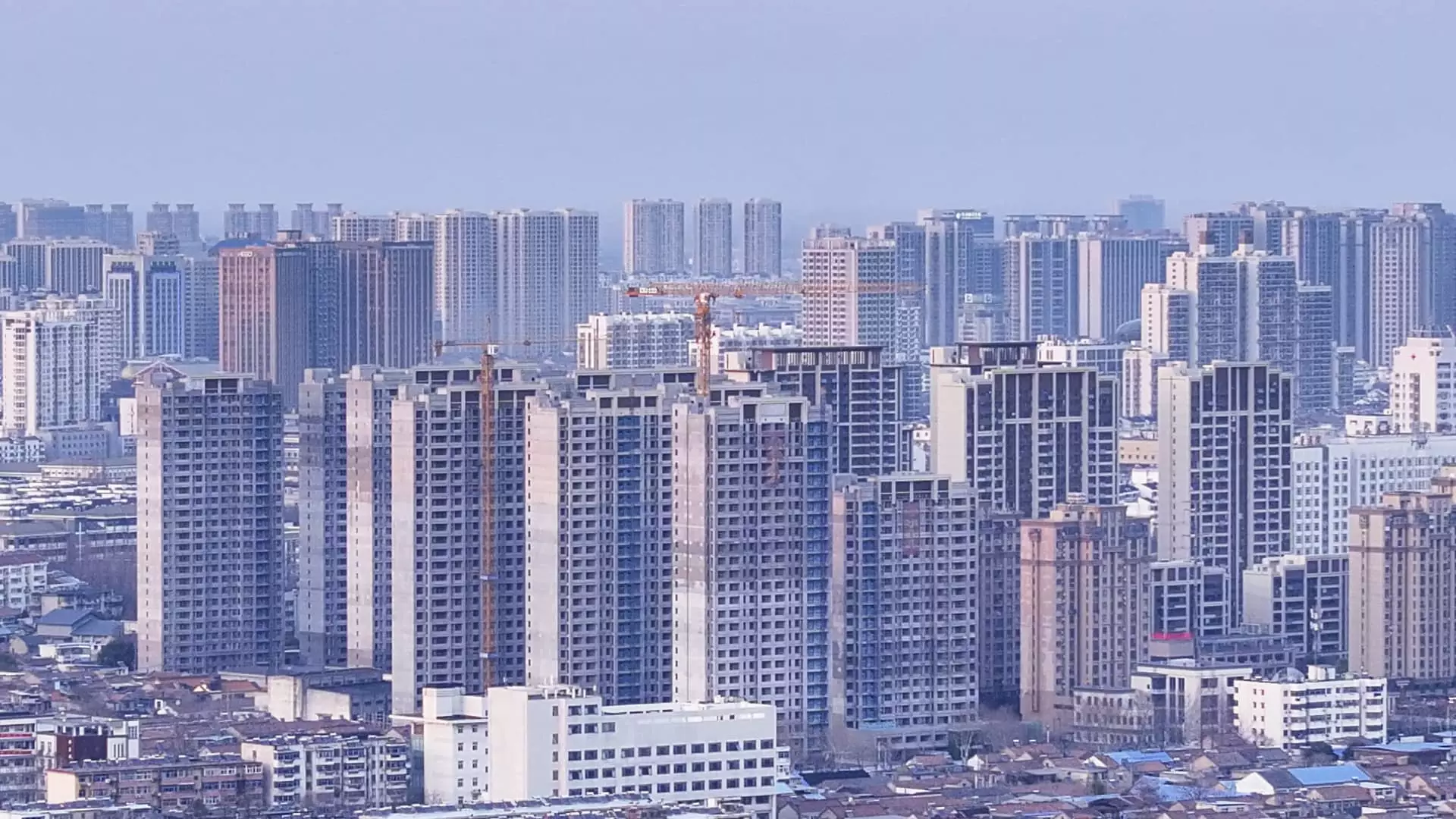China’s real estate market has experienced a tumultuous journey over the last few years. Having once been a robust economic pillar, the property sector is now grappling with a prolonged downturn that has significantly impacted household wealth and, by extension, the broader economy. The downturn was primarily triggered by Beijing’s crackdown on rampant borrowing, a practice that had propelled developers like Evergrande into financial chaos. As properties remain unsold and investment dwindles, the question that looms large is whether this battered market is on the brink of revival or enduring prolonged stagnation.
The biggest blow to the real estate market occurred between 2021 and 2023, when property sales plummeted to about 9.7 trillion yuan (or roughly $1.34 trillion). The situation has raised concerns among economists, who argue that a slow recovery in this sector could hinder China’s overall economic stability. The struggle of the real estate market reflects broader issues within the Chinese economy, where structural changes are long overdue.
UBS: A Glimmer of Hope?
Recently, analysts from UBS have emerged as unexpected optimists, claiming that the real estate market is finally showing signs of stabilization. John Lam, the head of Asia-Pacific property research at UBS, suggests that after four to five years of decline, new data indicate a possible turning point. However, these glimmers of hope are not universally felt; Lam acknowledges that improvements are localized and not reflective of national trends. This sentiment echoes concerns about the sustainability of any recovery, as various cities experience vastly different economic challenges.
Despite UBS’s cautious optimism, it must be noted that expectations regarding home prices stabilizing by 2026 are based on incomplete data and fluctuating market conditions. The constraints of a vastly uneven recovery raise questions directly about the effectiveness of local and national policies aimed at reviving the real estate sector. The inconsistency in recovery signals across different regions reflects a deeper nexus of economic and bureaucratic complexities that should not be overlooked.
Policy Initiatives: Realistic or Superficial?
Chinese policymakers have repeatedly called for an intervention to halt the downward spiral of the property sector, but achieving this goal is far easier said than done. As UBS points out, real improvements in secondary home sales do not directly convert into financial relief for developers, who have long depended on primary sales for their revenue. This lack of direct benefits raises questions about the effectiveness of the government’s stimulus initiatives and whether they can genuinely drive tangible results in the real estate landscape.
A critical point of concern remains how these policies translate to consumer confidence. Sky Kwah from Raffles Family Office aptly notes that a “key at this point in time is execution.” Unfortunately, boosting confidence is not a matter of overnight solutions; it requires an intricate balancing act of regulatory reform, monetary policy, and consumer trust. The potential unravelling of this balancing act could lead to further complications that hinder the sector’s prospects for a meaningful turnaround.
International Investment: A Double-Edged Sword?
Interestingly, the dynamic of foreign investment is making a comeback as international players scout for opportunities in China’s embattled real estate market. The formation of the joint venture Izara Holdings between Invesco and Ziroom emphasizes how foreign capital is cautiously re-entering a sector that has faced intense scrutiny. Nonetheless, this hardly guarantees stability. While the arrival of foreign investment serves as a sign of renewed interest, it also highlights the precarious nature of the current market.
It’s essential to evaluate whether these foreign investments will serve as a genuine lifeline for the local economy or merely act as a band-aid on a festering wound. Any revival spurred by foreign entities risks creating a scenario where local developers find themselves further marginalized, especially given the competitive edge that foreign capital brings to the table. Thus, revitalization efforts might ironically lead to an increased disconnect between local market stakeholders and the properties they once dominated.
In sum, while some analysts are wearing rose-tinted glasses, examining the reality of the market presents a more complex picture. Recovery signals are present, but they should be viewed through a lens of cautious skepticism. Various indicators suggest a potential turnaround, yet the fundamental challenges faced by local developers remain formidable. The road ahead for China’s real estate sector is undoubtedly fraught with uncertainty and a myriad of complexities that demand more than mere optimism for revitalization.

